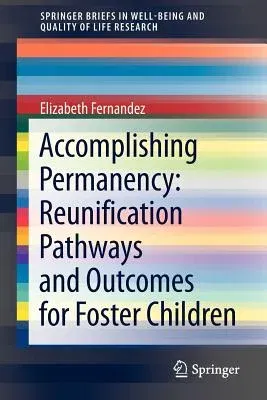Elizabeth Fernandez
(Author)Accomplishing Permanency: Reunification Pathways and Outcomes for Foster Children (2013)Paperback - 2013, 7 September 2012

Qty
1
Turbo
Ships in 2 - 3 days
In Stock
Free Delivery
Cash on Delivery
15 Days
Free Returns
Secure Checkout
Part of Series
Springerbriefs in Well-Being and Quality of Life Research
Print Length
154 pages
Language
English
Publisher
Springer
Date Published
7 Sep 2012
ISBN-10
9400750919
ISBN-13
9789400750913
Description
Product Details
Author:
Book Edition:
2013
Book Format:
Paperback
Country of Origin:
NL
Date Published:
7 September 2012
Dimensions:
22.61 x
15.24 x
1.02 cm
Genre:
Sociological
ISBN-10:
9400750919
ISBN-13:
9789400750913
Language:
English
Location:
Dordrecht
Pages:
154
Publisher:
Weight:
204.12 gm

